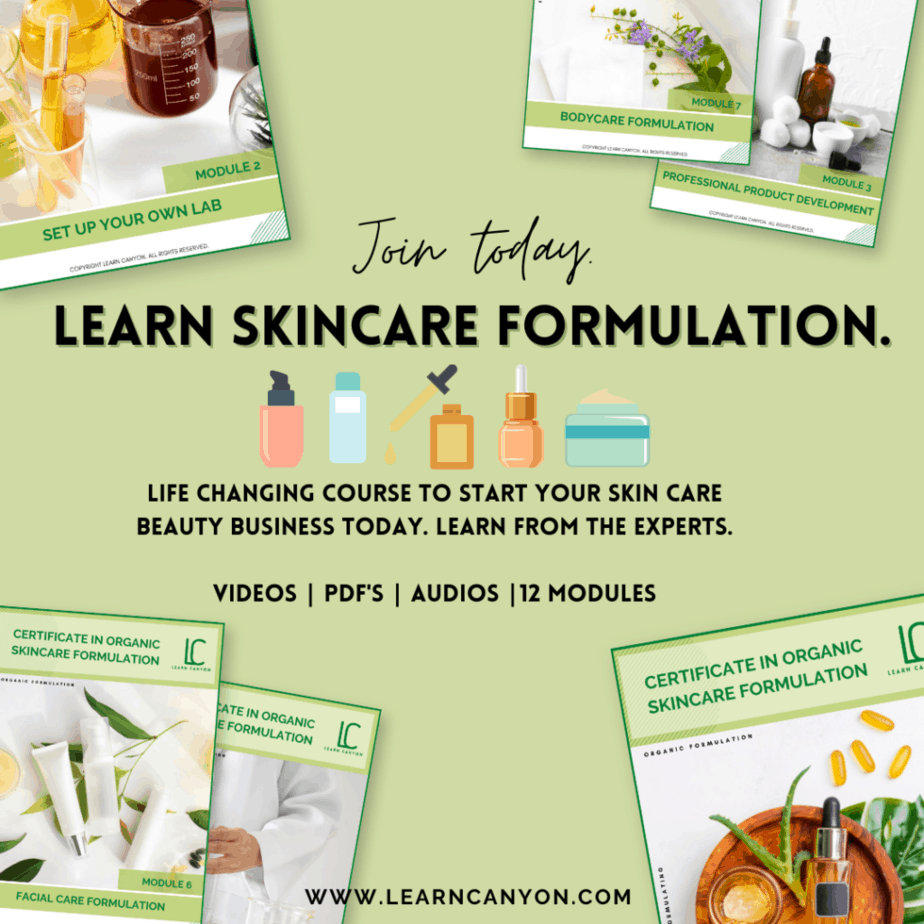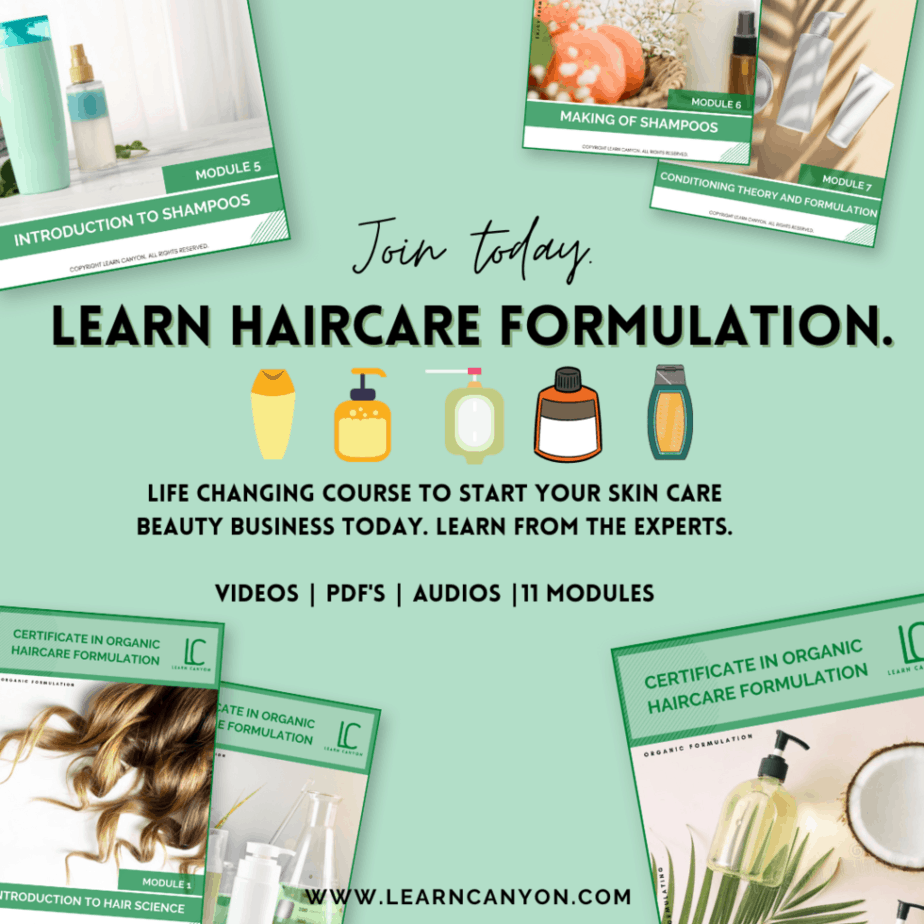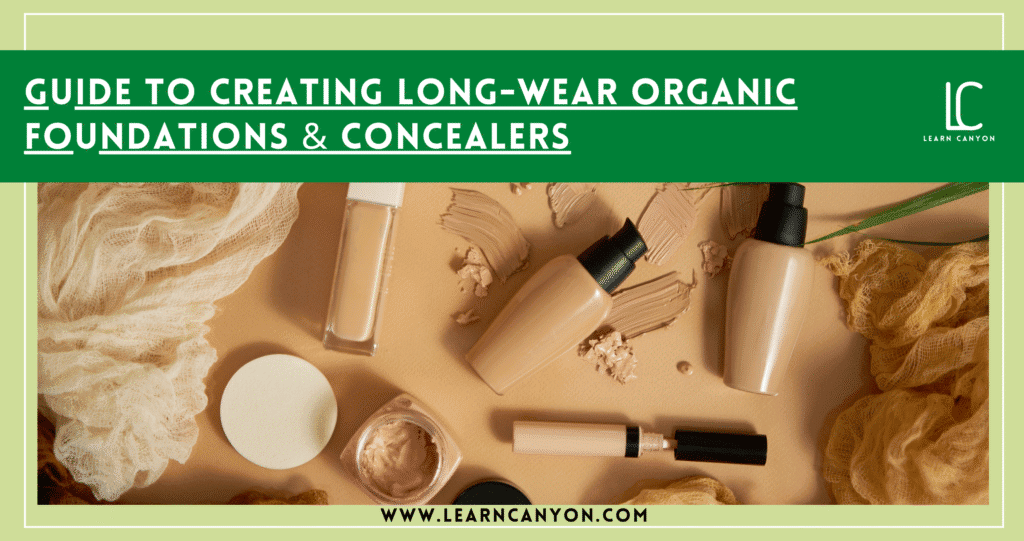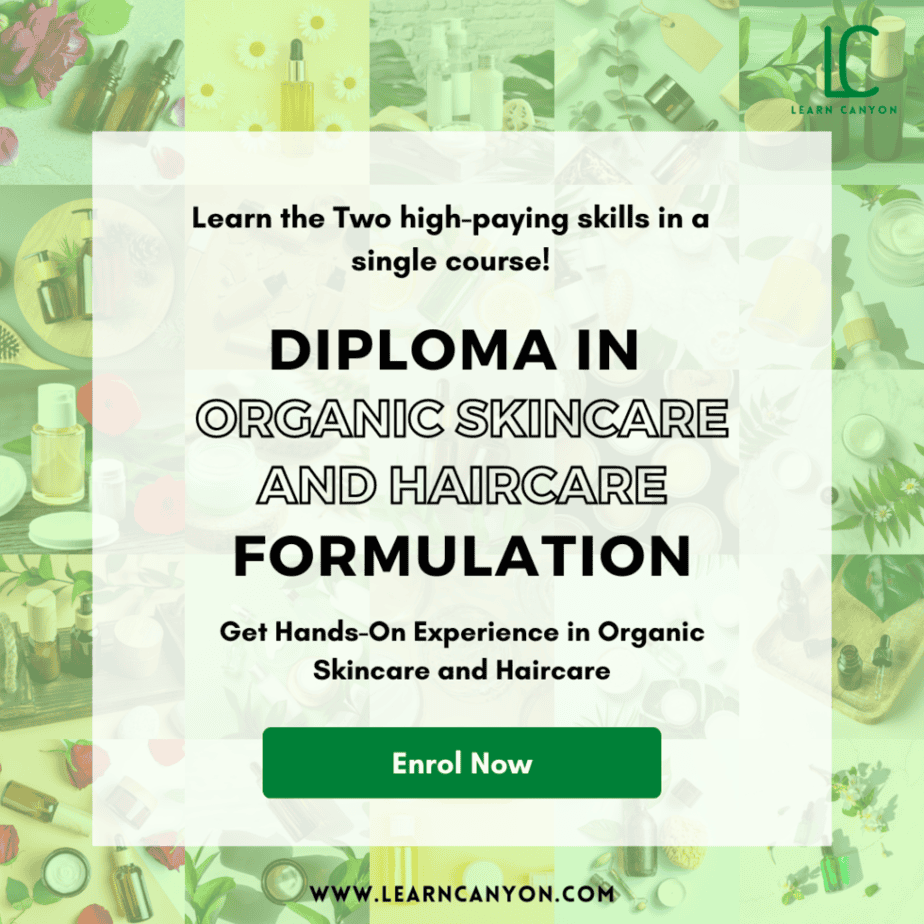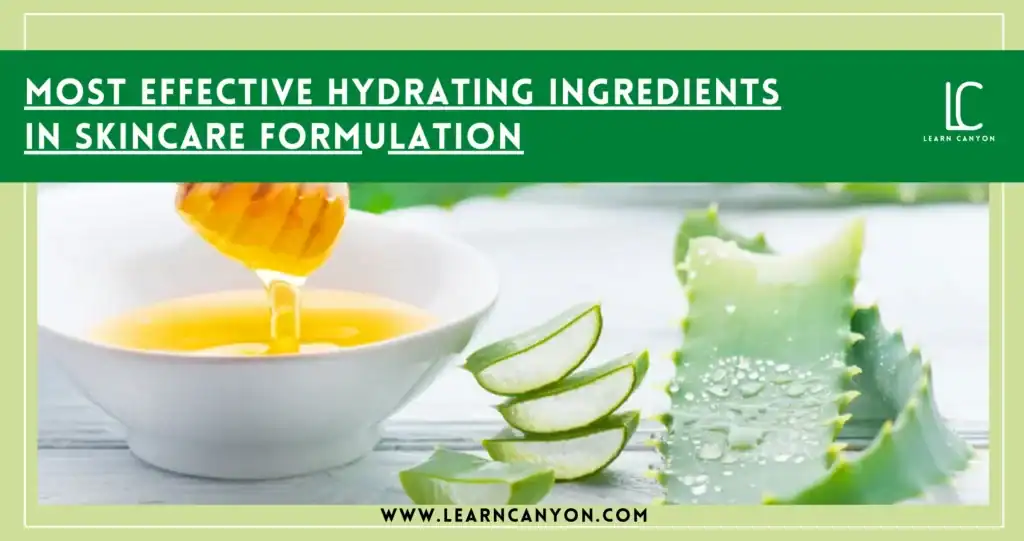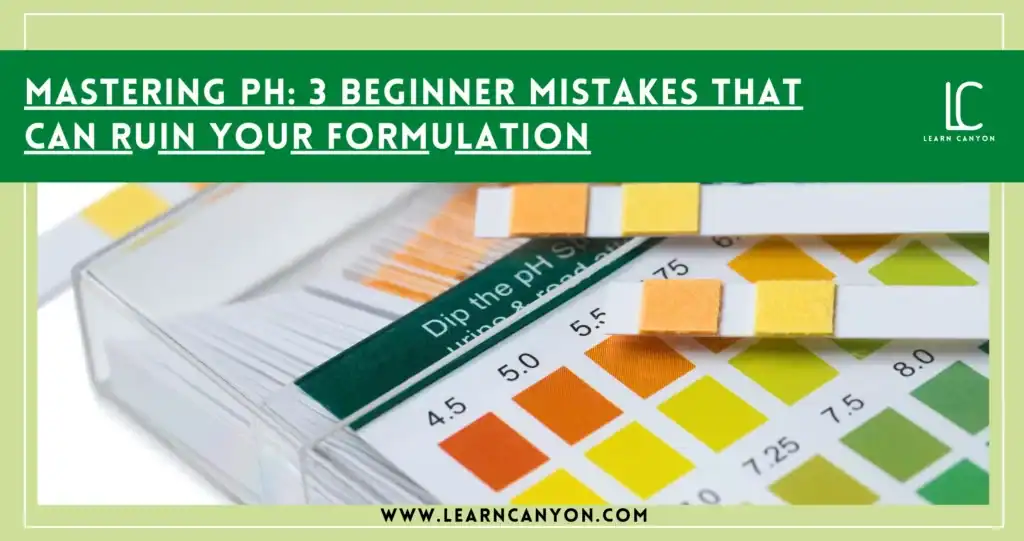Let’s be honest, just because a product is organic doesn’t mean it should melt off your face by noon, right?
That’s one of the biggest myths I hear all the time: that clean beauty can’t match the performance of conventional makeup. But here’s the truth, it absolutely can, if formulated with intention.
As a professional formulator who has spent years working with both organic and synthetic materials, I can tell you that long-wear makeup is no longer just about adding silicones or synthetic polymers. We now have incredible natural alternatives, bio-based film-formers, and high-performance botanical ingredients that help create complexion products that stay, without compromising purity or skin health.
Long-wear foundations and concealers are more than just trend demands. They’re about giving the conscious consumer the confidence that their makeup will stay with them through a long workday, a humid afternoon, or even an emotional evening (we’ve all been there). And if we want our organic formulations to truly compete, they need to deliver on both performance and purpose.
So, in this Blog, I’ll walk you through how to approach long-wear from an organic lens, because staying power and clean beauty do belong in the same sentence.
Let’s dive in!
Understanding “Long-Wear”: What Does It Really Mean?
Let’s unpack this buzzword, long-wear. We hear it all the time in beauty marketing, but what does it really mean from a formulator’s perspective?
In simple terms, long-wear refers to a product’s ability to stay put on the skin for an extended period without fading, creasing, transferring, or oxidizing. But for us formulators, it goes much deeper than that. We’re talking about designing a formula that can resist the skin’s natural oils, stand up to sweat and humidity, and still look smooth and even hours after application.
A long-wear foundation or concealer must grip the skin gently, but effectively. It should offer consistent pigment payoff and not break down as the skin produces sebum or as the environment changes throughout the day. Think: minimal touch-ups, zero patchiness, and absolutely no sliding into fine lines.
Here’s the catch with organic and natural formulation: we don’t lean on traditional film-formers like silicones or dimethicone crosspolymers. So, achieving long-wear requires a smart blend of botanical esters, natural waxes, plant-based film-formers, and physical stabilizers that work together in harmony.
In other words, long-wear in the organic world is about strategic layering, where every ingredient is chosen not just for its feel or function, but also for how it supports adhesion, flexibility, and durability on the skin.
So yes, “long-wear” might sound like a marketing promise, but when we understand the science and structure behind it, it becomes a beautiful formulation challenge. And I’ll be showing you exactly how to tackle that, step by step.
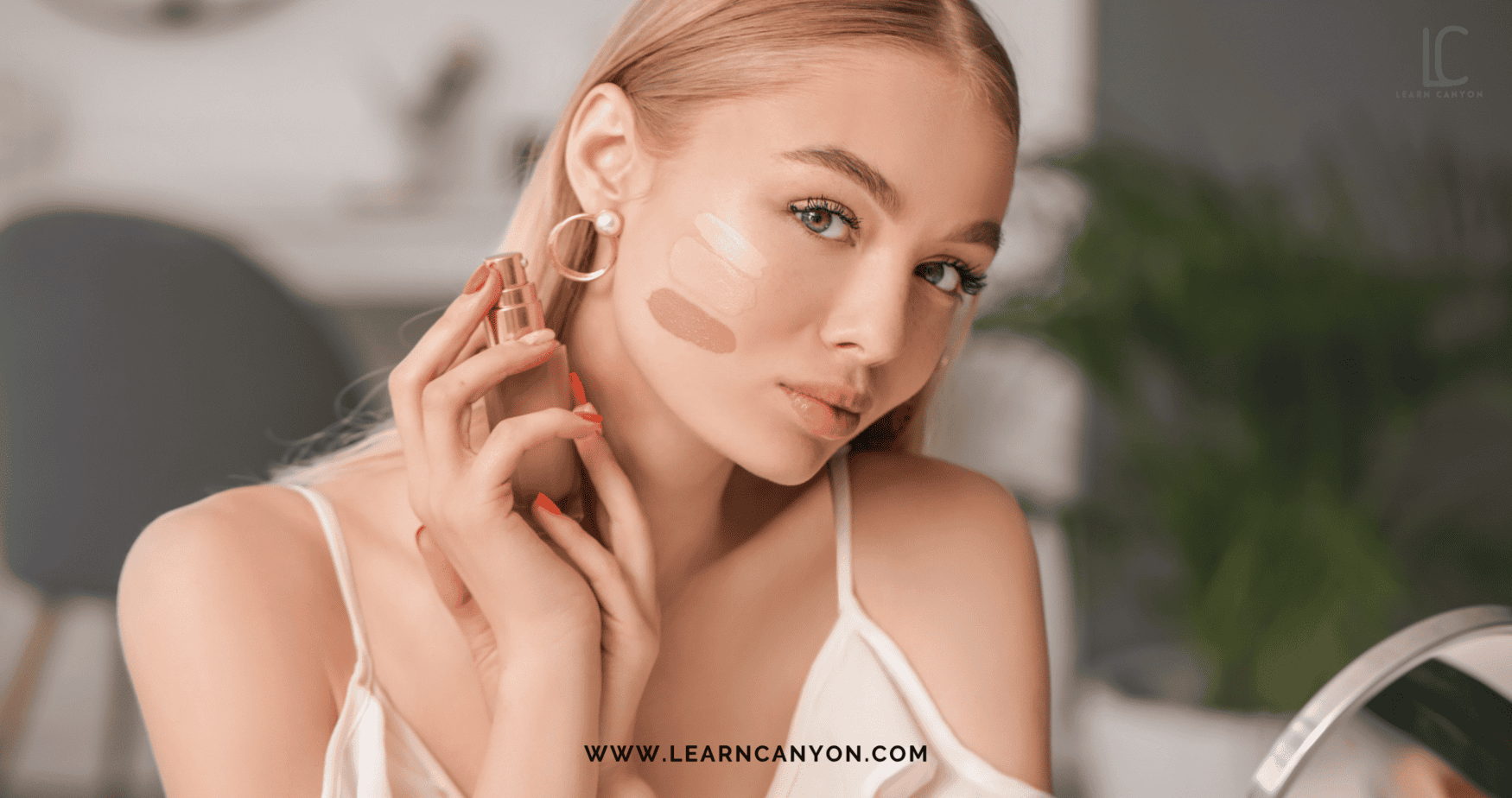
Foundation vs. Concealer: Different Needs, Similar Goals
When we talk about long-wear complexion products, it’s easy to lump foundation and concealer into the same category, but as a formulator, you’ll quickly realize that while they complement each other, they have distinct formulation needs.
Let’s start with foundation. This is your base, it’s meant to even out skin tone, blur imperfections, and provide a breathable layer of coverage. Depending on your target market, it might range from sheer and skin-like to full coverage and matte. The key with foundation is achieving a lightweight texture that glides on smoothly, blends easily, and adheres just enough to stay put, without feeling heavy or cakey. And yes, in the organic space, that’s possible with the right oils, film-formers, and emulsifiers.
Now, concealer is where things get a bit more intense. It’s concentrated. It’s targeted. It needs to cover, and it needs to stay. Whether it’s under the eyes, on blemishes, or around redness-prone areas, your concealer must offer higher pigment loading and a more occlusive structure to prevent it from settling into fine lines or fading throughout the day.
That means the texture has to be thicker, the emollient system has to support grip and flexibility, and the pigment dispersion needs to be spot-on for smooth, even payoff. You might even need waxes or natural thickeners that give the formula structure and strength.
So while both foundation and concealer share the same ultimate goal, flawless skin with lasting power, their journeys there are slightly different. As a formulator, recognizing these nuances helps you craft products that perform their unique roles beautifully, yet work together in perfect harmony. Think of them as siblings, same family, different personalities!
Choosing the Right Base: Oils, Butters & Natural Film-Formers
Let’s get into the heart of your formula, the base. This is where your foundation or concealer gets its structure, its feel, and most importantly, its staying power. And when formulating long-wear products the organic way, your base ingredients become your secret weapons.
First, let’s talk oils. Not all oils are created equal when it comes to makeup. For long-wear, we need oils that are lightweight, non-greasy, and have a good dry-down. Jojoba oil is a superstar, it mimics the skin’s natural sebum and helps your product blend beautifully without breaking down over time. Meadowfoam seed oil and squalane (especially olive-derived) are also excellent, they offer excellent pigment dispersion while keeping the skin soft and non-shiny.
Now, onto butters. While they add richness and emollience, butters like mango or cupuaçu are preferable to heavier ones like shea, especially if you want a smoother finish and quicker absorption. But go easy, too much butter can make the formula shift or feel greasy, which is the opposite of what we want in a long-wear product.
Here’s where it gets really exciting, natural film-formers. This is your clean alternative to synthetic fixatives like silicones. Ingredients like Pullulan, Agar, Algin, or even sugar-based biopolymers can help form a breathable film over the skin, locking in the product and improving wear time. Some natural esters and waxy emollients (like Isostearyl Isostearate or Triheptanoin) also act as subtle film-formers, boosting adherence without the heavy feel.
It’s about finding the right synergy. Your oils help with pigment flow and blendability, your butters bring softness and density, and your film-formers tie it all together with hold and durability. Once you nail this base, the rest of the formula becomes a beautiful layering game.
So don’t underestimate the power of your base, when chosen thoughtfully, it becomes the foundation (pun intended!) of a high-performance organic complexion product.
Pigments That Stay: Mineral Pigments & Dispersions
Now let’s talk color, the soul of your foundation or concealer. But not just any color, color that stays put. As organic formulators, we don’t just care about the vibrancy of our pigments, we care about their purity, safety, and performance too.
Enter: mineral pigments. These are our go-to for clean, long-wear complexion products. Iron oxides, titanium dioxide, and ultramarines are all tried-and-true options. They’re stable, skin-safe, and provide excellent opacity and coverage. But here’s the thing: while they’re beautiful, they’re also heavy and dry, so how we incorporate them makes all the difference.
Raw pigments can be difficult to disperse evenly. If they clump or streak, your formula won’t wear well, it’ll look patchy, and even worse, it might oxidize or slide off. This is where oil dispersions come in. Pre-dispersed pigments in natural esters or oils like caprylic/capric triglyceride, jojoba esters, or heptyl undecylenate give you smooth, even distribution with better adherence to the skin.
If you’re formulating from scratch, make sure you take time to wet your pigments properly, use a high-shear mixer or a three-roll mill for professional-level dispersion. Add a touch of a dispersing agent like lecithin, silica, or magnesium stearate to improve pigment flow and enhance the soft-focus finish.
And here’s a pro tip: combining small particle-size titanium dioxide with iron oxides gives a natural blurring effect that doesn’t look chalky, while also improving coverage and longevity. Just remember to stay within regulatory limits, especially if you’re selling globally.The goal is to create a formula where your pigments are fully integrated into the base. No separation, no streaking, no mid-day fading. With the right mineral pigments and dispersion technique, your organic foundation or concealer won’t just look beautiful, it’ll wear like a dream.
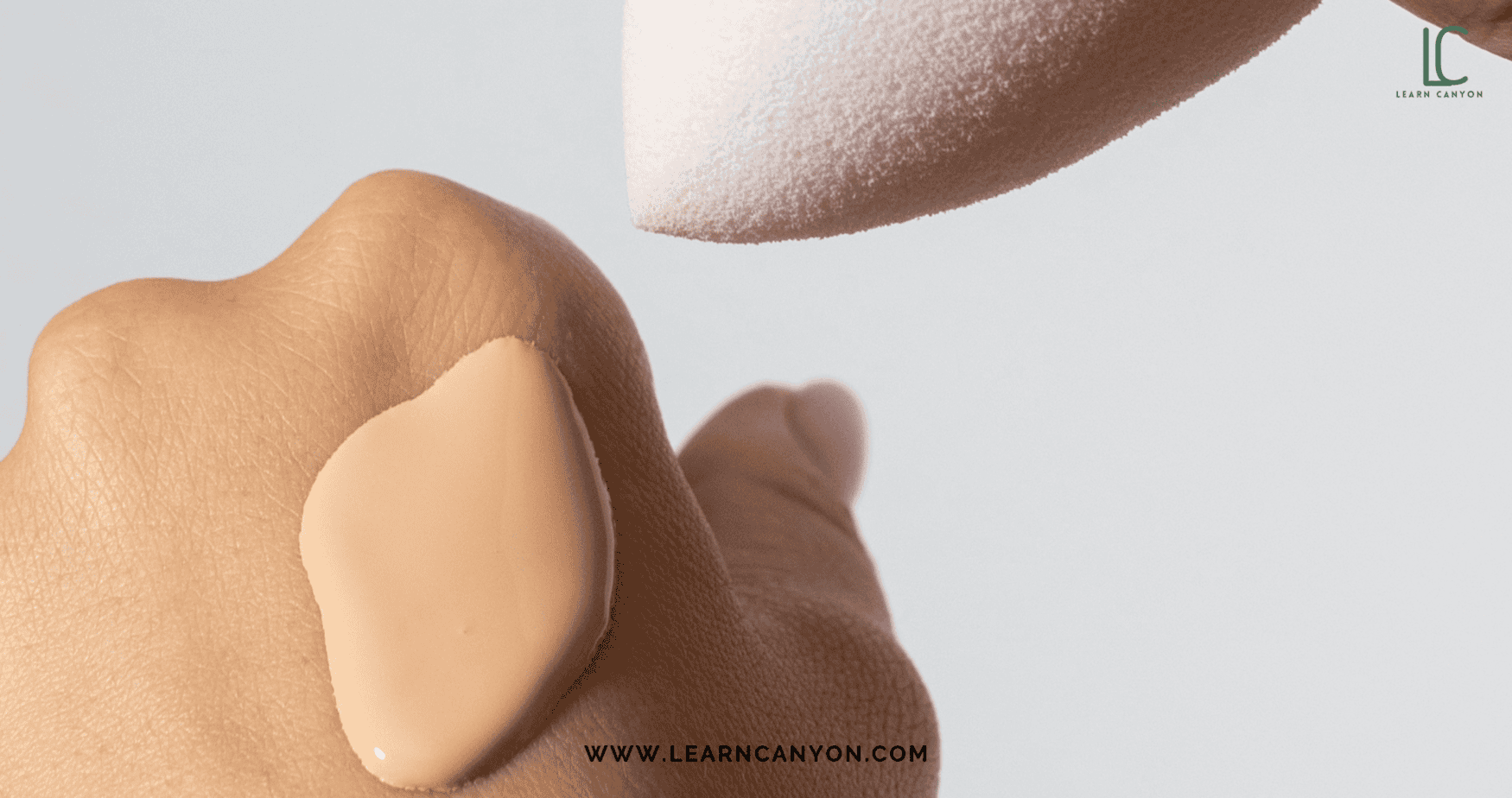
Texture Design: Balancing Coverage, Spreadability & Feel
Let’s be real, no matter how “natural” a foundation or concealer is, if it feels off on the skin, the customer won’t reach for it again. Texture is everything. It’s what decides if your product glides like silk, melts into the skin, or sadly, sits on top like a mask.
As a formulator, your job is to create that magic balance between coverage, spreadability, and sensory experience. And trust me, it’s a delicate dance, especially when you’re using only clean, skin-loving ingredients.
Start by thinking about your coverage goals. Higher coverage usually means higher pigment load, which can make the texture heavier or stiffer. To counter that, we use lightweight emollients like squalane, heptyl undecylenate, or coconut alkanes to give slip and ease of application without compromising payoff.
Now let’s talk spreadability. You want your formula to glide effortlessly but also stay where it’s applied. Natural esters and silky thickeners like magnesium stearate, silica, or natural starches (like tapioca or corn starch) can help create that perfect texture, creamy yet controlled. And if you’re working with a water-based or emulsion format, a little xanthan gum or acacia gum can enhance the flow and spread beautifully.
Then comes skin feel. This is where user experience kicks in. Is your foundation matte or dewy? Is your concealer velvety or fresh? For matte finishes, ingredients like rice powder, kaolin, or bamboo silica help absorb oil and smooth the look of pores. For dewy, radiant textures, infuse the base with nourishing oils and soft light-diffusing agents like mica or boron nitride.
And remember, dry-down time matters too. The product should set, but not so fast that the user can’t blend it. Play with natural film-formers or slow-evaporating esters to get it just right.In short, designing the right texture is like composing a song, each note (or ingredient) must harmonize. And when you get it right? That’s when your formulation goes from “nice” to luxuriously unforgettable.
Key Functional Ingredients for Long-Wear Performance
Alright, let’s get into the real heroes behind that all-day flawless finish, the functional ingredients. These are the behind-the-scenes stars that don’t always get flashy marketing attention but are absolutely essential for long-wear performance, especially when you’re formulating clean and consciously.
When I say functional, I mean ingredients that go beyond moisturization or color, they directly impact things like adherence, oil control, transfer resistance, and even sweat-proofing. Sounds a lot like the job of synthetics, right? But guess what, nature gives us some pretty amazing options too.
Let’s start with natural film-formers. These are what help your formula “cling” to the skin in a lightweight, breathable way. I love using Pullulan, Algin, or Agar for this, they form a gentle film on the skin that improves wear time and adds a bit of structure. If you’re formulating emulsions, film-formers like sucrose stearate or sodium PCA can also help with hold while maintaining skin hydration.
Then we have oil and sweat absorbers. No one wants their foundation breaking down halfway through the day because of sebum. I often include ingredients like rice powder, tapioca starch, bamboo silica, or zinc stearate. These give a soft-focus finish and help keep oil at bay, without making the skin feel dry or tight.
Now for pigment stabilizers, because it’s not just about adding color; it’s about making it stay. Think magnesium stearate, silica, and boron nitride. These not only enhance adhesion but also improve blendability and texture.
Another category I love? Natural esters and structured emollients like heptyl undecylenate, isoamyl laurate, and coconut alkanes. They give slip, help disperse pigments beautifully, and dry down just enough to reduce transfer, ideal for long-wear clean beauty.
And don’t forget setting agents if you’re formulating hybrid or cream-to-powder textures. A touch of carnauba wax or candelilla wax can really help lock everything in without making the formula too rigid.In the end, long-wear is a performance art, and these ingredients are your backstage crew. Choose them wisely, blend them skillfully, and your organic formula won’t just look good, it’ll last like a pro.
Preservation & Stability in Color Cosmetics
Let’s talk about the part that most people don’t find glamorous, but as a formulator, you and I both know it’s absolutely crucial: preservation and stability. Because what’s the point of crafting a beautiful, high-performance organic foundation or concealer… if it separates in a week or grows microbes in a month?
Now, here’s the unique challenge with color cosmetics, especially when you’re working with natural pigments, plant oils, and minimal water (or no water at all, in anhydrous formulations). The preservation strategy has to be smart, not just safe.
For water-free formulations like concealer sticks or pressed foundations, you may think, “Oh, no water, no microbes, right?” Not always! Even traces of moisture from fingers or the environment can introduce contamination. That’s why I often include antioxidants like Vitamin E (Tocopherol) or Rosemary Extract to slow down oxidation and rancidity, especially in oil-rich bases. These don’t preserve against microbes, but they keep the formula fresh and extend shelf life beautifully.
For creamy foundations or liquid concealers that contain water, even just aloe juice or hydrosols, you’ll need a broad-spectrum preservative. My clean go-tos?
- Geogard Ultra (Gluconolactone & Sodium Benzoate)
- Leucidal SF Complete
- Preservative Eco (Benzyl Alcohol & Salicylic Acid blend)
These are gentle, globally accepted, and perfect for conscious consumers. Just keep in mind that pH plays a big role in their efficacy. For example, Geogard Ultra works best in formulations under pH 6. So always measure and adjust your pH accordingly, it’s not just a finishing step, it’s part of your preservation system.
When it comes to stability, you’ll want to test for:
- Pigment separation (especially in emulsions)
- Oil bleeding in anhydrous formulas
- Texture shifts due to heat or cold
- Oxidation of pigments or oils over time
And let’s not forget packaging, it can either protect your formula or expose it to light, air, and contamination. So choose wisely! Think airless pumps, UV-protective bottles, or metal tins with tight seals.In short, even the cleanest, most beautiful organic formula needs protection. Preservation isn’t about harsh chemicals, it’s about making sure your artistry survives long enough to reach (and wow!) your customers. Stability is what turns a good formula into a reliable one. And that, my friend, is how you build trust in clean beauty.

Testing Your Formula: From Wear Tests to Rub-Off Trials
Okay, so you’ve crafted a gorgeous formula, it glides like butter, covers beautifully, and smells divine. But now comes the moment of truth: testing. Because even the most well-thought-out formulation can surprise you once it hits real skin. And let’s be honest, long-wear claims without real wear tests? That’s just wishful thinking.
As a professional formulator, I always say: what works in the lab must prove itself on the skin. So here’s how I approach testing for long-wear, especially with organic foundations and concealers.
1. Wear Test (a full day, at least)
Apply your product just like a customer would. No primers, no special brushes. Observe it throughout the day, how does it wear?
- Does it fade?
- Settle into fine lines?
- Separate around the nose or smile lines?
Take photos every few hours and check under different lighting. Real skin is your best feedback loop.
2. Rub-Off / Transfer Test
This one’s simple but crucial. Once your product sets, press a tissue or cotton pad against the skin and see how much product transfers. Long-wear products should have minimal rub-off, especially if you’re going for that “touch-proof” claim.
3. Water & Sweat Resistance Test
Spritz a fine mist of water or even lightly dab with a wet cloth and observe. You want the product to hold up without streaking, melting, or smudging. For extra challenge: simulate sweat by using a saline solution or exposing the skin to a bit of heat (hello, summer humidity simulation!).
4. Oxidation Test
Apply the product and check the color after a few hours. Does it darken or shift? That’s oxidation, and it can happen due to unstable pigments or oils. Stabilizers like Vitamin E or surface-treated pigments help prevent this.
5. Stability Checks
This one’s more behind-the-scenes but so important. Keep your formula in different environments, room temp, fridge, and a hot cabinet (around 40–45°C). Monitor for:
- Color change
- Texture shifts
- Oil separation
- Grittiness or sedimentation
Do this over weeks, not days. You’re checking for real-world shelf life.
6. Packaging Compatibility
Apply the formula, store it in its final packaging, and observe. Some natural oils can react with certain plastics or metals. Make sure the formula doesn’t discolor or degrade due to packaging interaction.
In short: don’t just test to tick a box, test to understand. Testing is where your formulation goes from theory to practice. It’s how you fine-tune a good product into a great, reliable, skin-loving essential.
And trust me, once you’ve passed the rub-off test and survived a humid afternoon? You know you’ve got a winner.
Long-Wear Organic Foundation & Concealer Formulas
Now for the part I know many of you have been waiting for, real formulas you can build on. These aren’t just pretty concepts; they’re functional, tested blends that strike the balance between clean ingredients and long-lasting performance. Whether you’re a DIY enthusiast, an indie brand owner, or a fellow formulator looking for a solid starting point, these are my go-to picks.
Lightweight Long-Wear Liquid Foundation (Natural Satin Finish)
Phase A – Water Phase
- Chamomile Hydrosol – Qs%
- Aloe Vera Juice – 15%
- Glycerin (Plant-Derived) – 3%
- Xanthan Gum (clear, low viscosity) – 0.3%
Phase B – Oil Phase
- Jojoba Oil – 8%
- Meadowfoam Seed Oil – 5%
- Heptyl Undecylenate – 3% (natural silicone alternative)
- Candelilla Wax – 1%
- Emulsifier (Olivem 1000 or similar) – 4%
Phase C – Pigment Phase (Pre-dispersed in oil)
- Iron Oxides (Yellow, Red, Black) – 5–6% (depending on shade)
- Titanium Dioxide (non-nano, small particle) – 4%
- Magnesium Stearate – 1%
- Silica – 1%
Phase D – Cool Down
- Vitamin E – 0.5%
- Preservative (Geogard Ultra or EcoCert option) – as recommended
- Natural Film-Former (Pullulan) – 1%
- pH adjuster – to 5–5.5
Why it works: This formula offers buildable coverage, a satin-skin feel, and stays put thanks to the balance of natural oils, waxes, and lightweight film-formers.
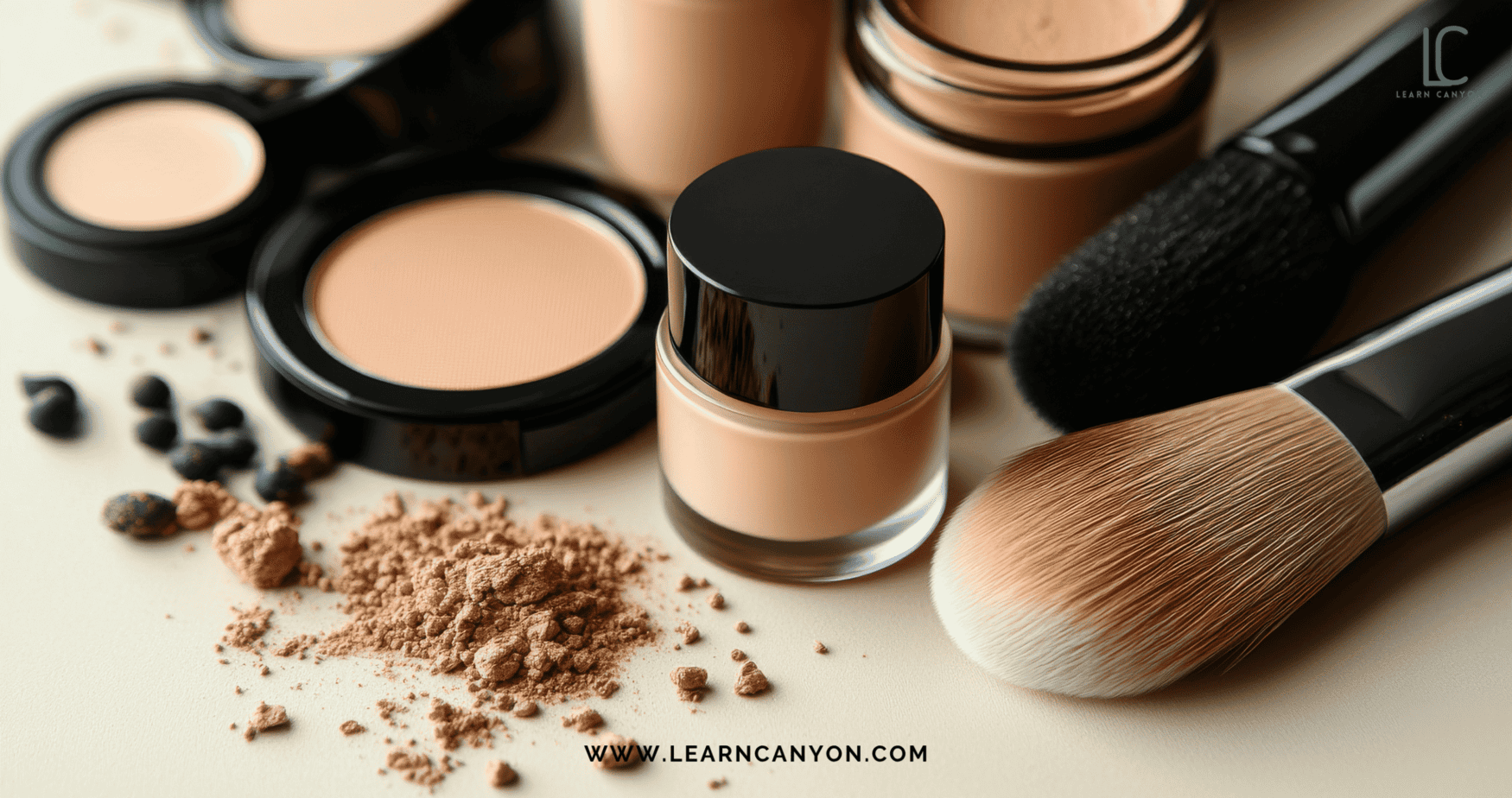
Creamy Concealer Stick (Medium to Full Coverage)
Phase A – Oil & Waxes
- Caprylic/Capric Triglyceride – Qs%
- Shea Butter (refined) – 6%
- Mango Butter – 4%
- Carnauba Wax – 3%
- Candelilla Wax – 2%
- Isostearyl Isostearate – 4%
Phase B – Pigment Phase (Pre-wetted in oil blend)
- Iron Oxides – 6%
- Titanium Dioxide – 3.5%
- Zinc Stearate – 1%
- Silica – 1%
Phase C – Actives & Finishers
- Tocopherol – 0.5%
- Rosemary Antioxidant – 0.2%
- Optional: Light mica for luminosity – 1%
Why it works: This stick concealer delivers strong coverage for blemishes and under-eye areas. It sets well without creasing, thanks to the wax-emollient structure, and stays creamy during application but firm in stick form.
Pro Tips from My Lab
- Always test shades on actual skin tones, what looks good in the pot can oxidize on skin.
- Want more dewiness? Add squalane or reduce the silica.
- Need extra oil control? Boost with bamboo powder or rice starch at 1–2%.
These formulas are just the beginning, you can tweak the coverage, shift the finish from matte to glow, or even convert them into serum foundations with the right emulsifiers. But if you’re aiming for clean and long-lasting, these are your power-packed starting points.
Conclusion
Here’s the truth I’ve come to love and live by, organic makeup can absolutely perform. It’s not just a dreamy ideal anymore. With the right formulation strategy, the right functional ingredients, and a little bit of formulator magic (you know what I mean), you can create clean complexion products that don’t just sit pretty, they stay pretty.
Gone are the days when going natural meant sacrificing wear time, coverage, or finish. As you’ve seen throughout this guide, it’s all about understanding how each ingredient behaves, how texture influences longevity, and how to use nature’s tools with a performance mindset.
To me, formulating long-wear organic foundations and concealers is more than just technical, it’s intentional. It’s a statement that we can care deeply about the health of the skin, the purity of our products, and the expectations of modern beauty users.
So, as you start formulating or refining your next product, remember: you’re not limited, you’re empowered. With the growing range of botanical-based actives, film-formers, and pigment technologies, your organic formulations can go head-to-head with conventional ones. And the best part? They’ll do it with integrity, transparency, and skin-loving care.


